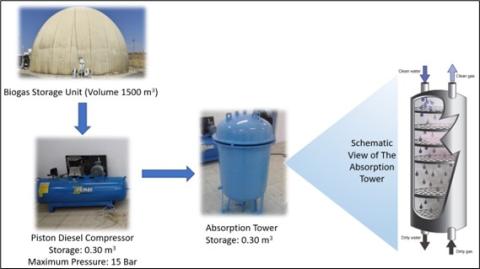You are here
A new approach for upgrading Biogas produced at a local wastewater treatment plant
Pages :
-

Biogas is globally recognized as a crucial source of renewable energy. After undergoing proper treatment, the purified form of biogas, known as "biomethane", has the potential to be injected into existing natural gas infrastructure or compressed for use as a vehicle fuel. The principal pollutants which cause a reduction in the energy density of biogas and impede its utilization, specifically in engines, are carbon dioxide, hydrogen sulfide, and siloxanes. Furthermore, the presence of carbon dioxide in biogas has a significant impact on global warming. In this study, the water scrubbing method, which is the most used method in biogas upgrading processes, was utilized due to its low operating cost. With the decreasing availability of clean water resources around the world and the challenges of utilizing them, the reuse of treated wastewater has become increasingly important. Therefore, in this study, treated wastewater was used as scrubbing water for biogas instead of clean water. In addition, the biogas used in the study is the gas produced in the wastewater treatment plant of a local municipality, thus contributing to the uniqueness of the study. Prior to upgrading, the biogas content produced in the plant had CH4 and CO2 values of 62% and 37%, respectively. However, after the implementation of upgraded technology, these values increased to 96% (CH4) and 3% (CO2). These results clearly demonstrate the success of the new method.
